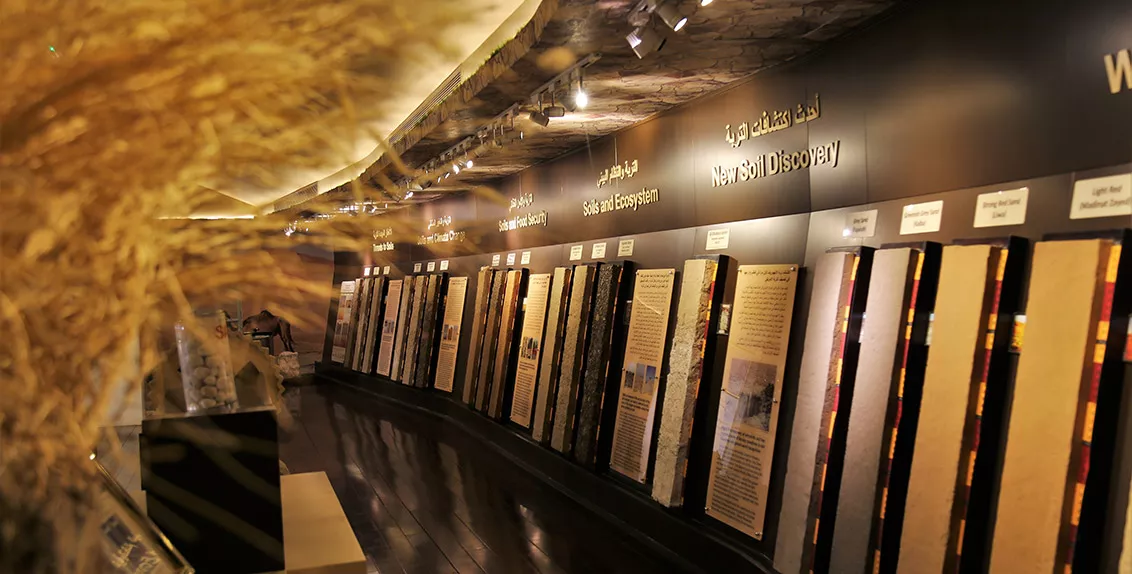Global study on soil museums features Emirates Soil Museum
Soils are critical to life on Earth. Indeed, they are as essential as water for the sustenance of humans and a multitude of other species. They serve many crucial functions - from food production to groundwater storage to carbon sequestration. It might not seem obvious, but soils store more carbon than is contained in all aboveground vegetation and regulate emissions of carbon dioxide and other greenhouse gases.
Unfortunately, soils have been in decline over the past decades. Studies show that some 33% of the world’s soils suffer from moderate to severe degradation. From erosion to salinization to nutrient depletion to loss of soil biodiversity, soils are under threat from man-made and natural factors.
So it is very important to ensure their sustainable use for food production and other purposes. And building awareness is a first step in this direction.
There are a number of dedicated soil museums in different countries, including the UAE. They serve to spread knowledge about the importance of soils and promote efforts on environmental protection and sustainable development.
However, until recently, there was no up-to-date, comprehensive information about the status of soil museums worldwide.
So a major study published recently in Advances in Agronomy sought to fill this gap. The study collected the latest information about soil museums and museums with permanent exhibitions on soils around the world, including the Emirates Soil Museum hosted by the International Center for Biosaline Agriculture (ICBA).
Conducted by an international team of soil experts, the study identified 38 soil museums specifically dedicated to soils, 34 permanent soil exhibitions, and 32 collections of soils that are accessible by appointment. It also analyzed the number of soil museums since the early 1900s, as well as information about their locations, contents, and visitors.
According to the study, the number of soil museums has increased since the early 1900s, and there was a noticeable growth between 2015 and 2019. It shows that Europe, East and South-East Asia have the highest concentration of soil museums and permanent exhibitions related to soils, with Russia having the largest number of soil monoliths exhibited and the International Soil Reference and Information Centre (ISRIC) - World Soil Museum having the richest and most diverse collection of soil monoliths.
The study also notes that various soil museums are increasingly offering fun activities, including interactive animations for children and adults, guided tours, and conferences. Some museums are also using advanced technologies to attract more visitors, including augmented reality applications, videos, animations, 3D models, and interactive games.
Speaking of the study, Ms. Mai Shalaby, Curator of the Emirates Soil Museum and co-author of the study, said: “Soil museums play a huge role when it comes to building awareness about soils and their link to sustainable development. At the Emirates Soil Museum - a unique facility in the Gulf region established in 2016 - we have been continuously making efforts to disseminate information about soils and threats facing them. Over the years, our museum has become a knowledge hub and has benefitted thousands of students, researchers, professionals, environmentalists, decision- and policy-makers.”
According to the authors, soil museums play a significant role in educating the general public about environmental protection and sustainable development. Therefore, it is important to support them in every way possible. Moreover, the study concludes that, though relatively numerous overall, soil museums and exhibitions still remain sparse in some parts of the world.
